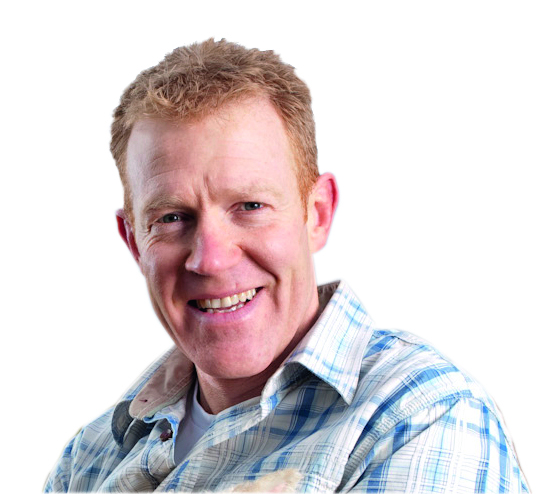What a brilliant idea – why has no one thought of it before? That was my reaction when I heard about the launch of BBC Countryfile Magazine back in 2007. At that point, it hadn’t occurred to me that I’d be asked to contribute to the magazine, but I jumped at the chance to tell the varied and inspiring stories of British food and farming in print.
When the magazine lands on the doormat every month, my routine is always the same. First, I turn to the pages written by my old friends and TV colleagues John, Matt and Ellie. Although I’ve known them all for donkey’s years, and I don’t live a million miles away from either John or Ellie, it’s rare that we actually meet while filming the programme. Despite the fact we frequently appear in the same episodes, we can be at opposite ends of the country on our individual assignments and those shoots often take place weeks apart. But when Sunday evening comes round, we’re all together on screen; that’s the magic of television.

After the presenter pages, I’ll look for articles and pictures from places around Britain that I know and love. The Cotswolds, obviously, but also East Devon and north-east England, where two of my sisters have lived for many years and which I know like the back of my hand.
At least, I like to think so. It’s always a thrill to discover something new about a place that’s familiar. I found out just what makes Seaton Wetlands in Devon so popular when it was shortlisted for Best Nature Reserve in the BBC Countryfile Magazine Awards four years ago (issue 176, May 2019). I had no idea how much work had gone into creating and maintaining the marshland and reed beds in such a beautiful location beside the River Axe. As well as thousands of visitors every year, the site attracts an abundance of wildlife, from curlews and kingfishers to butterflies, dragonflies and even otters.

Then there are the places I dream of visiting. I’ve lived and worked in the landlocked Cotswolds for most of my life, so it’s no wonder that the British coast, and especially the Scottish islands, have always attracted me.
Maria Hodson’s wonderful article about St Kilda (issue 151, October 2016) really left its mark on me with its description of the isolated archipelago in the North Atlantic, a full five-hour sea journey from Lewis in the Outer Hebrides. Perilous rocks, rugged cliffs and fog-shrouded sea stacks were brought vividly to mind in what she evocatively described as “a gannet-crowned kingdom”.
Although I’ve never visited the ribbon of little islands way out in the ocean, I feel a special connection to St Kilda because it’s the original home of one of Britain’s precious breeds of primitive sheep. The Soay is an intelligent, nimble sheep which takes its name from one of the isles in the archipelago and can be traced all the way back to the Bronze Age.

We’ve had Soays on the farm since we opened to the public in the 1970s, so take it from me, these sheep are as hard as nails! Like many ancient sheep breeds, they don’t need shearing because they shed their wool naturally, while pregnant ewes can give birth easily outdoors in all weathers with no human intervention at all. I’m delighted to say that Soays have featured several times in the pages of BBC Countryfile Magazine over the past 200 issues – and here’s to the next 200.
